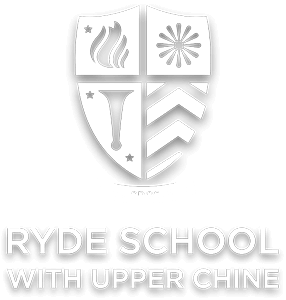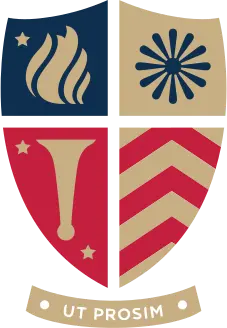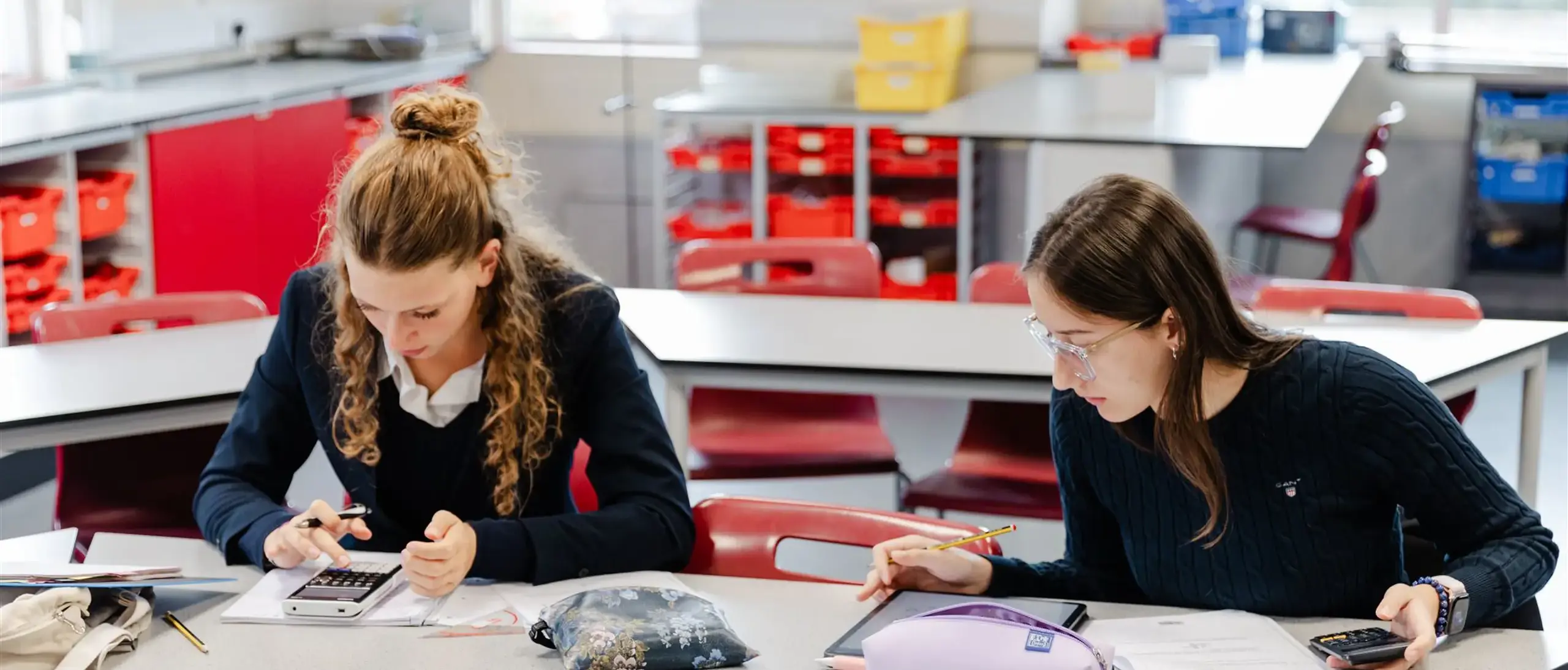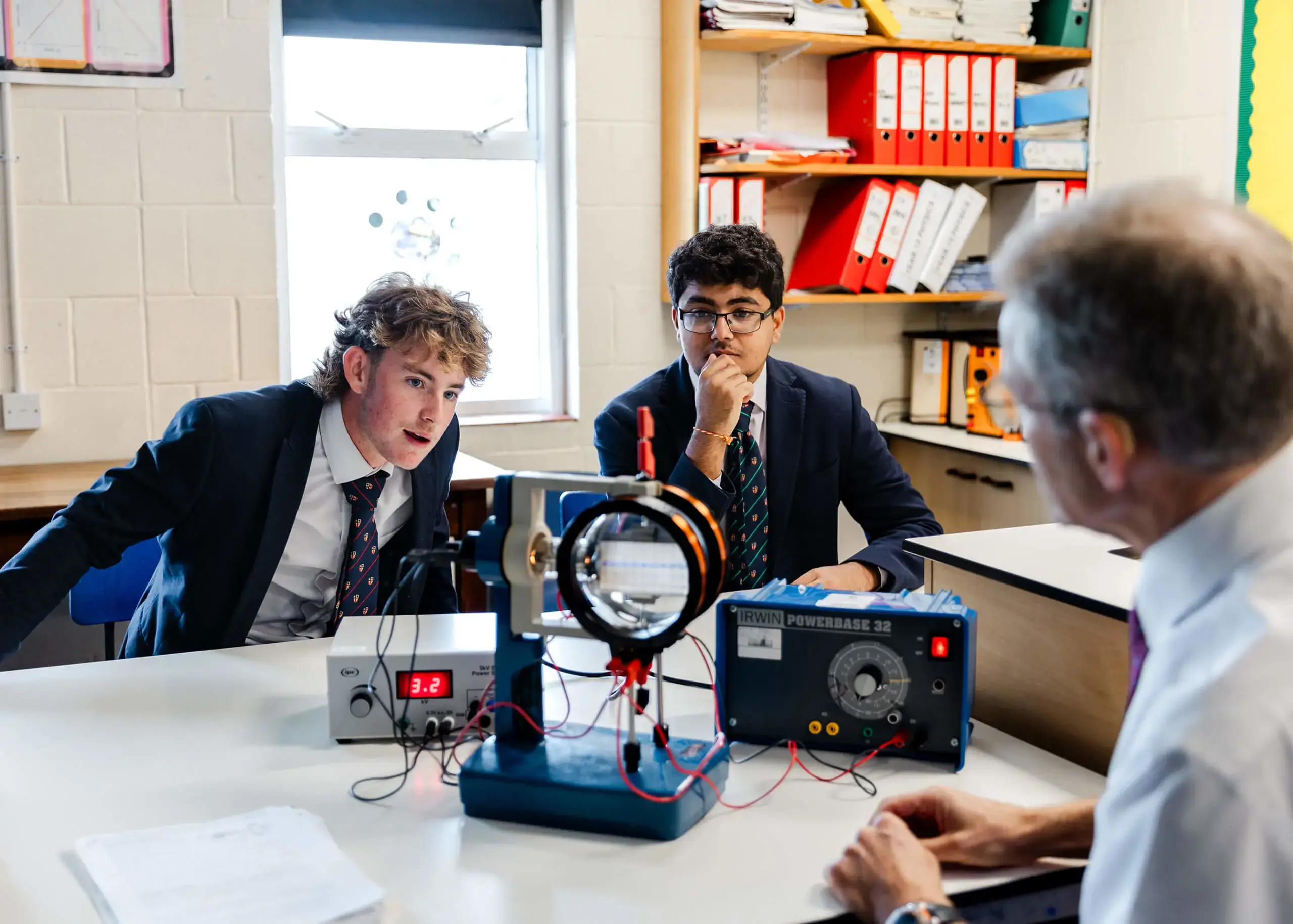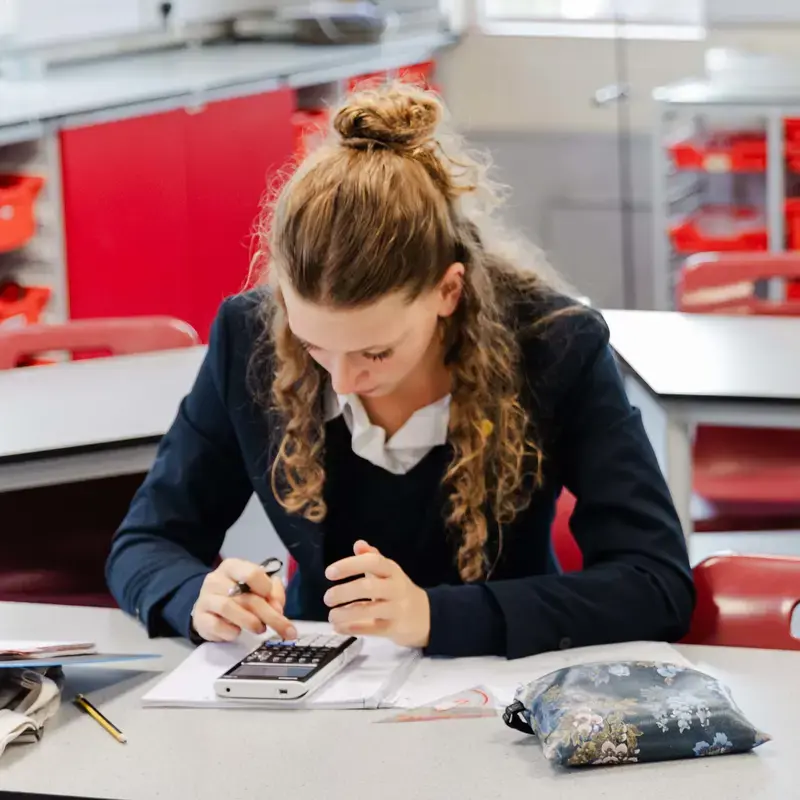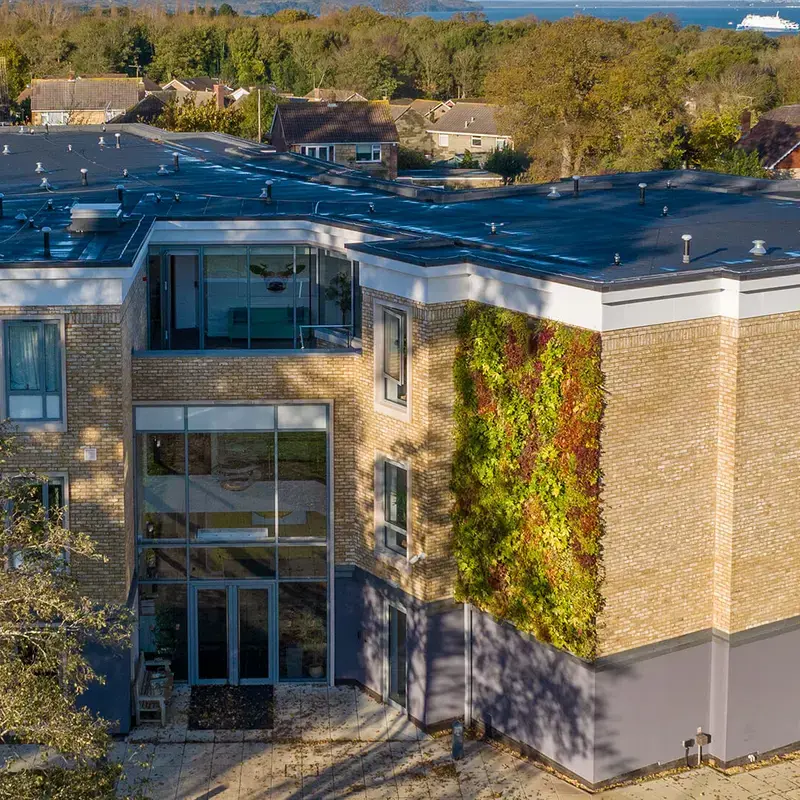- Home
- Sixth Form
- Courses at Sixth Form
- A Level Mathematics
A Level Mathematics builds on GCSE work, and is broadly split into Pure Mathematics, Statistics and Mechanics. The use of technology is encouraged, and real world applications are sought out. Relevance to the workplace or academia is evident through the recent introduction of a large data set, encountered in the course and final exams with plenty of rigorous content to learn within the Pure Maths sections. Studying Further Mathematics alongside the single A Level will allow for deeper exploration and should be considered by anyone contemplating studying Mathematics or related subjects at university.
ENTRY REQUIREMENTSMathematics - Grade 7 or above at GCSE, whilst in exceptional cases a Grade 6 may be considered. Further Mathematics - Grade 8 or above at GCSE with some evidence of extension work beyond the GCSE.
WHERE THIS SUBJECT CAN TAKE YOUMathematics is widely viewed as one of the key facilitator subjects, held in high regard by universities and employers the world over. Essential for the likes of Engineering, Physics and, of course, Mathematics, an A Level in Maths normally sits quite high up the list for other degrees such as Medicine, Dentistry, Veterinary, Natural Sciences, Biology, Chemistry, Economics, Computing, Business and Accounting and is also useful for the Humanities and Social Sciences. Further Mathematics, meanwhile, is certainly key for anyone hoping to pursue Mathematics at degree level and, similarly, will be highly regarded by any of the fields alreadymentioned above. MATHEMATICS & FURTHER MATHEMATICS (A LEVEL) 29 AWARD - A LEVEL COURSE CONTENT/STRUCTUREMathematics at this level is designed to develop students’ powers of understanding and deduction as well as resourcefulness in solving problems. It appeals to those with a curiosity about numbers, patterns and ideas that have the power to solve real problems. ASSESSMENT
|
